MEDIA: NZ’s sustainable finance shift slipping behind Australia
Written by Greg Hurrell, originally posted on www.businessdesk.co.nz
New Zealand’s shift to a sustainable finance model is slow, uneven and lagging behind other countries, according to a progress report. Toitū Tahua: Centre for Sustainable Finance warned that exporters could lose markets if they were seen as failing to transition to a sustainable business model. It also wants to see KiwiSaver rules changed so that large providers can invest in private innovators in NZ.
The roadmap
Two years ago, the Sustainable Finance Forum released a “roadmap for action” – a plan to create a more sustainable financial system by 2030. The group included banks, insurance companies, industry, Māori businesses, academia and government. It set out 11 areas, such as government leadership, disclosure and inclusiveness, to measure progress against. Creating the Centre for Sustainable Finance was one of these, and the only one of the 11 to be fully implemented to date. While there was some solid progress in six other metrics, four had shown “insufficient progress”, including data availability. In most areas there had not been enough change to reach the targets set by 2030, the centre stated. Its progress report said sustainability-themed investments had increased to $40 billion in 2021, from $22b in 2020. “But there is a long path ahead before our financial system is actually sustainable, equitable and inclusive,” it stated. “Our status, as a net importer of capital, demands that we remain connected and aligned with global developments in sustainable finance.” CEO Jo Kelly said where NZ did lead was in introducing mandatory climate-related disclosure.
On the other hand, Australia had introduced a national emissions reporting platform in 2007. That meant it was well ahead in having consistent and comparable data for investment decision-making, she said. The centre will be focused next year on improving the availability of such data for investment decision-making. Financial institutions such as the NZ Banking Association have complained of the difficulty of obtaining hazard risk data. This has been due, at least in part, to the National Institute of Water and Atmospheric Research’s commercial obligations which, as a crown research institute, is bound by the Companies Act. Kelly said businesses were increasingly having to get to grips with the transition to net zero by 2050. “What we’re going for is a wholesale shift of the role of finance and enabling, at first, the transition to a low-carbon economy.” A key element of that was breaking the sustainable finance concept away from the preserve of a small group of experts into a broader group, Kelly said. To get there, sustainable investment needed a consistent taxonomy of definitions, so that everyone could agree on what it actually was.
KiwiSaver investment rules
Kelly said investment needed to be urgently directed into developing homegrown climate solutions, and KiwiSaver should be a part of that. The 2020 forum recommended changing KiwiSaver's structure and incentives to allow active long-term investments into environmental and social outcomes. Progress to date is “unknown” according to the centre’s report.
While the centre appreciated that funds needed to be diversified beyond the small NZ market, current legislation skewed investment into secondary markets, she said. “At the moment, almost all of that money is invested in liquid securities, of which approximately 55% is invested overseas.”If large KiwiSaver providers invested 1% of their portfolios in unlisted companies for positive social and environmental impacts, that would unlock almost $1b a year without compromising their commercial returns, Kelly said. “That is a natural question that gets asked: how do we mobilise KiwiSaver into this? So that’s probably something that we’ll push into next year.
While legislative change to KiwiSaver liquidity requirements would be needed for that to happen, progress in other areas was down to more collaboration and coordination, Kelly said. “Mostly, it hangs on a mindset shift, and getting together and figuring it out.” Centre chair Bridget Coates said in a statement that exporters would face increasing trade barriers and risked losing customers if they didn’t meet rapidly changing expectations on emissions reductions and other issues. “Despite pockets of world-leading work, such as the introduction of mandatory climate-related disclosures, in general, we are now lagging on our transition to sustainable finance compared to Australia and to many of our trading partners.” Kelly warned against letting sustainable finance become politicised, but said there had already been a shift from the “why” to the “how”. “We need to get busy thinking about how we fund and finance the transition, not if we will, or why we should.”
Limited progress
While insufficient progress had been made on data, better, if still limited, progress was made on the government leadership and resiliency metrics. Both covered adapting for home flood insurance and preparing for uninsurable markets, a process being led by the Treasury.
This year’s Emissions Reduction Plan and National Adaptation Plan were both signs of progress in government leadership. Insufficient progress had been made in including people in “vulnerable circumstances” into the financial system, despite several initiatives, and the passage of the Financial Markets (Conduct of Financial Institutions) Amendment Act 2022.
The act is due to come into force in 2025 and requires banks to have fair-conduct programmes which would include their treatment of vulnerable customers.
